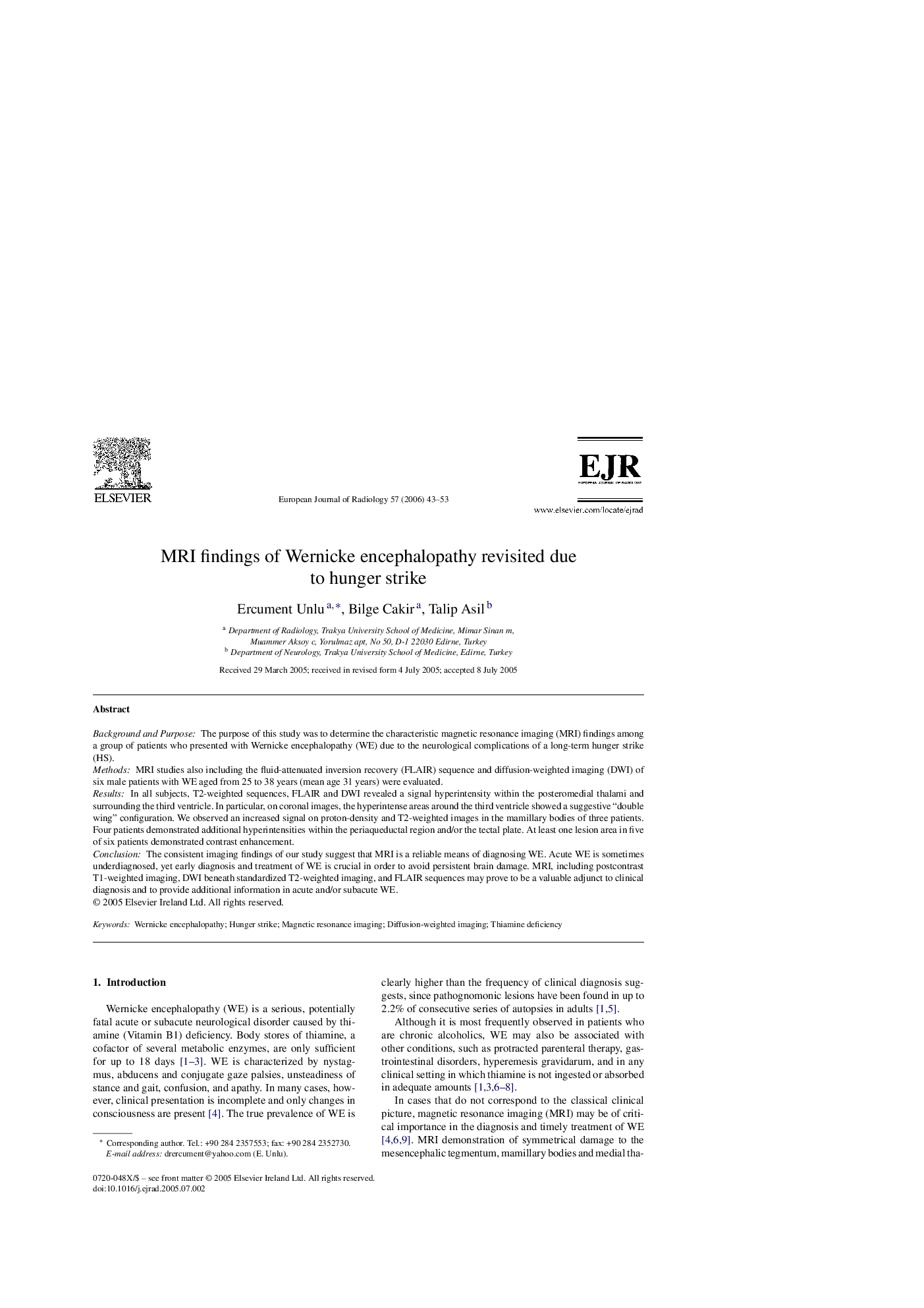| Article ID | Journal | Published Year | Pages | File Type |
|---|---|---|---|---|
| 4228818 | European Journal of Radiology | 2006 | 11 Pages |
Background and PurposeThe purpose of this study was to determine the characteristic magnetic resonance imaging (MRI) findings among a group of patients who presented with Wernicke encephalopathy (WE) due to the neurological complications of a long-term hunger strike (HS).MethodsMRI studies also including the fluid-attenuated inversion recovery (FLAIR) sequence and diffusion-weighted imaging (DWI) of six male patients with WE aged from 25 to 38 years (mean age 31 years) were evaluated.ResultsIn all subjects, T2-weighted sequences, FLAIR and DWI revealed a signal hyperintensity within the posteromedial thalami and surrounding the third ventricle. In particular, on coronal images, the hyperintense areas around the third ventricle showed a suggestive “double wing” configuration. We observed an increased signal on proton-density and T2-weighted images in the mamillary bodies of three patients. Four patients demonstrated additional hyperintensities within the periaqueductal region and/or the tectal plate. At least one lesion area in five of six patients demonstrated contrast enhancement.ConclusionThe consistent imaging findings of our study suggest that MRI is a reliable means of diagnosing WE. Acute WE is sometimes underdiagnosed, yet early diagnosis and treatment of WE is crucial in order to avoid persistent brain damage. MRI, including postcontrast T1-weighted imaging, DWI beneath standardized T2-weighted imaging, and FLAIR sequences may prove to be a valuable adjunct to clinical diagnosis and to provide additional information in acute and/or subacute WE.
